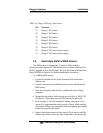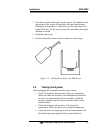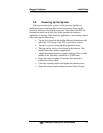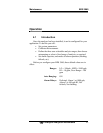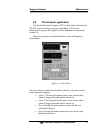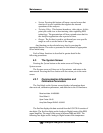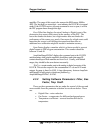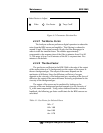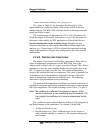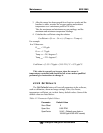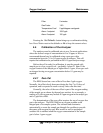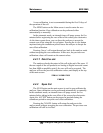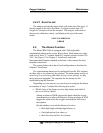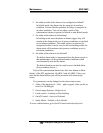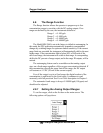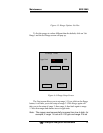
Oxygen Analyzer Maintenance
Teledyne Analytical Instruments 47
*Output normalized by calibrating with a span gas in N
2
.
The values in Table 4-1 are theoretical but should give a first
approximation as to what the output of the sensor will be in the new
background gas. The BDS 3960 will make further refinements once the
proper gas factor is input.
The working range of adjustment is 0.25 to 2.50. This factor will
divide the output. For example if the factor is set to 2.00, the output of
the sensor, when read by the PPC application will be divided by two.
Special consideration on the working range: Changing the gas
correction factor has an effect on the maximum working range of the
analyzer, e.g.: if a gas factor of 2.00 is selected the maximum working
range of the analyzer is 50 ppm. Any reading above this, may saturate
the amplifier.
4.3.2.3 TEMPERATURE COEFFICIENT
The output of the sensor is affected by temperature. There are two
types of temperature compensation on the BDS 3960. One is the
compensation to high levels of oxygen, more than 100 ppb. This effect is
transparent to the user and is handled by the software application on the
PPC. It requires no input from the user. The second compensation
involves the baseline drift due to temperature. This value is generally set
at the factory but can be modified or adjusted by the user. Since the
sensor is temperature controlled, the default is zero. The following
discussion is just information on its possibilities.
The baseline drift temperature coefficient is a number with units of
ppb/degree centigrade and must be matched to the sensor’s characteristic
drift over temperature. This coefficient ranges from 0.50 to 1.75 ppb/°C.
Note: The coefficient is different from sensor to sensor. If the
sensor is replaced, a new coefficient must be entered. TAI
can supply this coefficient or it may be determined by the
user.
The coefficient can be adjusted between 0.00 and 5.00 using the Up
and Down buttons on the instrument. To estimate it in the field:
1. Set the coefficient to zero.
2. Run the analyzer on “Zero” calibration gas for two weeks or
until a baseline stability is reached, i.e. the oxygen reading does
not fluctuate.



